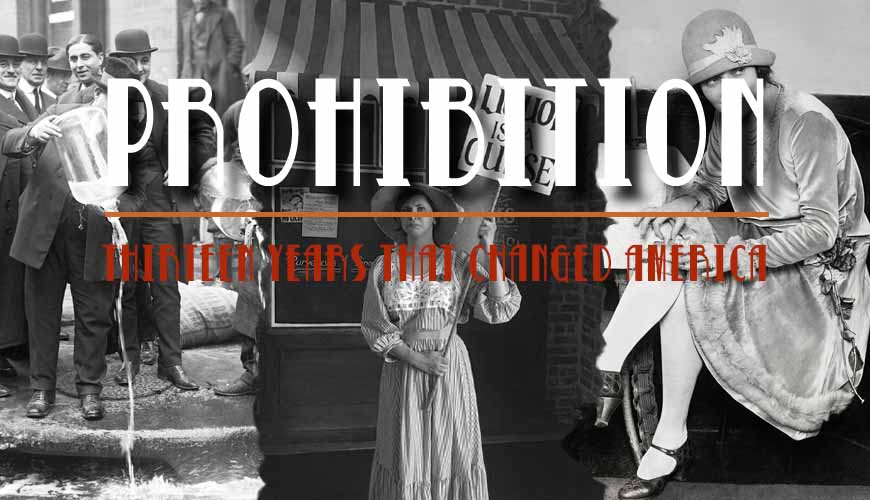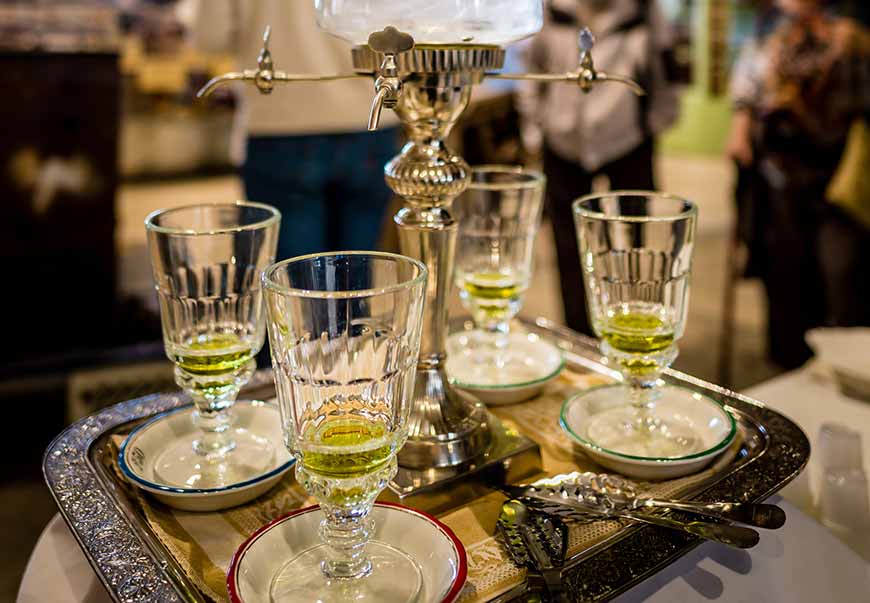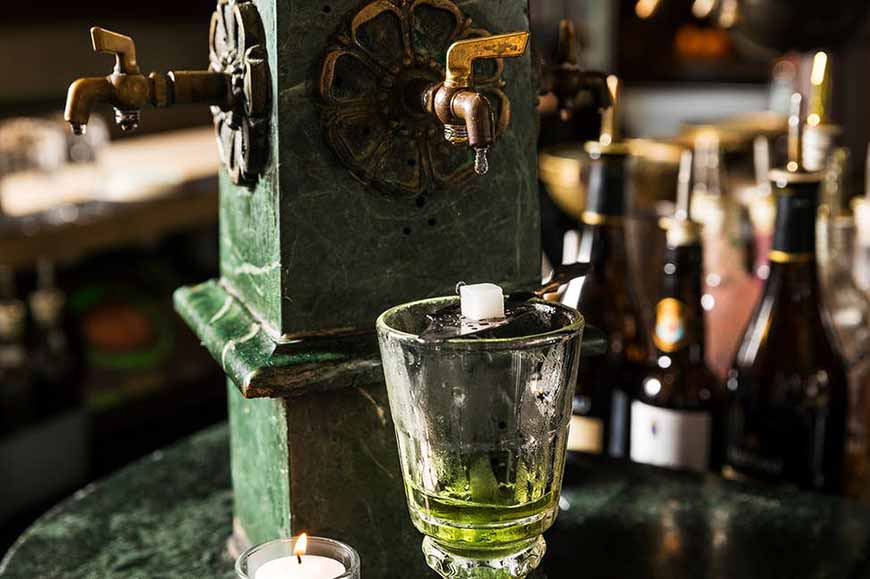Illegal Absinthe - Absinthe Legal Status in The United States
First Things First, What is Absinthe?
Absinthe may be produced just like gin. It is a neutral spirit with high alcohol proof, usually 90 to 148 proof. Infused with a combination of botanicals and numerous herbs, Grand Wormwood and Green Anise are the primary ones for absinthe. It is usually infused for the second time to enhance its flavor and give the absinthe its distinctive green hue. Grand Wormwood (Artemisia absinthium) is the most important component, as the psychoactive thujone comes from wormwood.
Absinthe And Prohibition in USA
Absinthe is the only distilled spirit that has lived the long, hard, magical, controversial, and mystical life. The 18th Amendment, better known as Prohibition, was ratified in the United States in 1919. Absinthe, La Fee verte, or The Green Fairy, was however banned in 1912 because it was believed that the green spirit contained in the bottles was hallucinogenic and dangerous. Absinthe remained banned even after the 21st Amendment abolished Prohibition in 1933. The ban on absinthe was still in force 95 years later, when the FDA and the Alcohol Tobacco Tax and Trade Bureau (TTB) authorized absinthe sales in the United States. There were, however, a few "buts" as it is so often with FDA and TTB.
To be more specific, the main "but" is that all lawfully imported absinthes sold in the United States liquor stores must be thujone-free. What exactly does it mean legal absinthe that is thujone free? The TTB declares a product thujone-free if its thujone level is below 10ppm (parts per million, equivalent to 10 mg/l). We can call this an "American Absinthe", which is however, nowhere near the pre-ban original, wormwood absinthe. The maximum allowed level for thujone in absinthe in the United Kingdom and the European Union is 35ppm (35 mg/l). If you want to understand more about thujone, myths and reality, read our article covering everything about Thujone and Absinthe.
For those who are unfamiliar, thujone is to absinthe what caffeine is to coffee: it is what gives it its "buzz". It's the ingredient that pretty much defines absinthe as a drink, the ingredient that distinguishes it from any other alcoholic beverage ever created.
Absinthe Becoming Legal in The US
Two companies were instrumental in this transformation. The first was and is a Swiss absinthe producer, Kubler Absinthe. The other was Viridian Spirits from the US, which has been importing their own thujone-free absinthe brand called Absinthe Lucid. Lucid Absinthe was acquired by Hood River Distillers in March, 2013.
The first absinthe available in the US was Lucid, which is a perfect representation of everything that is wrong with absinthe in the United States. Lucid is not sold in Europe (no one would buy it), and the Kubler marketed in the United States is not the same Kubler sold in Switzerland.
The Legal Status of Absinthe in The United States
Absinthe was outlawed in the United States in 1912 and was illegal in until 2007. Prior to that, this green liquor had a long history in the United States (and in South and Central America). New Orleans and its French Quarter were the most popular places in the United States to consume absinthe.
In French Quarter the famous Old Absinthe House was and still is located. This landmark has been a tourist attraction for more than 100 years now. You can still see the original marble absinthe fountain there, which is used to prepare the Green Fairy. The USA was late to the party in legalizing absinthe. In the European Union the legalization started in 1988 but some countries still had national bans. For example, absinthe was fully legalized in Switzerland (2005) and in France (2011).

Is Absinthe Legal in The US?
The most common absinthe-related query on the internet is "Is absinthe legal?" The short answer is yes, the alcoholic spirit absinthe (also spelled absinth in the Czech Republic or absenta in Spain) is perfectly legal in the United States as long as it is thujone-free. Why is absinthe still considered illegal in the United States by some? Simply because absinthe was prohibited until 2007 when, over a century after its prohibition, absinthe was legalized in the US again.
Differences Between European And American Absinthes
Sometimes people believe that absinthe is illegal in the USA. Despite the fact that you can still find this outdated information on the internet, it is not true. These important details will help you avoid any confusions about absinthe's legal status in the USA.
All absinthes in the USA must be thujone free. The FDA requires max thujone levels in absinthe to be below 10ppm (parts per million) and that is technically thujone-free. This means that American absinthes, and absinthe legally sold in the US stores, are all bottled with NO WORMWOOD. They cannot be therefore considered as real absinthes. The authorities did not actually ban absinthe, technically, they prohibited the absinthe-contained thujone.
European absinthes that are properly made can contain more wormwood. The legal threshold for thujone in the European Union is 35mg. This is the difference between "American Absinthes" vs "European Absinthes". European absinthes may legally contain more thujone, while most American absinthes are thujone-free.
Is Absinthe Legal to Buy?
Yes, absinthe is now legal... but, in the United States, real "Wormwood Absinthe" with thujone is not a controlled substance but its sale in bars and liquor stores is banned. Absinthe is, however, legal to purchase and possess in the United States. It's like a dream come true (with a little help from a small loophole). Absinthe was legalized after almost 100 years and absinthe bottles are now legal to buy in bars, restaurants, and liquor shops around the world. You might be asking yourself, "Is Absinthe legal in the USA?" This is the most common question we get. You can order real absinthe online, as well as ordering it in bars or restaurants in most of the European Union where absinthe may be sold as long as it stays at 35mg limit of thujone.

Where Can I Legally Buy Real Absinthe?
Absinthe Original offers an extensive range of authentic absinthe products and accessories, including absinthe spoons, absinthe glasses and traditional metal absinthe fountains in silver, gold, and copper finish. Absinthe Original was founded in 1996 and with headquarters both in Prague and London, we ship absinthe orders on a daily basis. After placing your order, it takes approximately 2-3 days by DHL Express to deliver the Green Fairy to your door in the USA. You, the buyer, are at no risk as delivery is guaranteed. Absinthe is legal in America, so you don't have to worry about customs issues. Absinthe Original is available for absinthe purchases by all absintheurs as we ship internationally. Enter the world of absinthe, a mystical drink that celebrates culture and has a long, rich history.
Absinthe History in Europe And in The USA
The absinthe ban didn’t reach all the corners of Europe, and countries like Czechoslovakia (now known as Czech Republic) continued its production, becoming home of the last authentic wormwood absinthe.
Western European countries did not abolish the ban on absinthe until the 1990s, however it took a few more decades for it to become legal in America. The drink has been legalized in several countries, including Spain, France and Switzerland, where in town of Coviet, absinthe was first made by a skillful distiller Pierre Ordinaire somewhere between 1789 and 1792. Around 1794, a skilled distiller named Abram-Louis Perrenoud, was captivated by the spirit and passed the original recipe to his son, Henri-Louis Perrenoud. After changing his last name to the more marketable Pernod, monsieur Perrenoud established a distilling company, and Maison Pernod Fils in Pontarlier, Franche-Comté, France was born.
Pernod, the grand-grandfather of French Pastis. Pernod was the one who brought absinthe to its glory and fame. Absinthe distilleries were all over the Europe at the turn of the century and absinthe bars were common in many cities, particularly in Paris. The Green Fairy, as absinthe is affectionately known, was most also found and served in New Orleans' French Quarter where the famous absinthe bar, Old Absinthe House is located. Hemingway and other poets enjoyed their absinthe holy glass there.

Why Was Absinthe Banned in France?
Many people believe that absinthe was made illegal in France because of its hallucinogenic properties but the truth is that shortly after their grape vineyards began to recover from the blight that had devastated many of them, the French launched an anti-absinthe propaganda campaign. Absinthe was less expensive and had a stronger punch than wine; opium was also prevalent in France, which contributed to the hallucinations when paired with 140-proof spirit. It was impossible to persuade the French to consume wine instead of absinthe, so they dismissed it as poison. It's similar to the church group's funding of the film Reefer Madness.
Knowing You Don't Know Anything Is The Only True Wisdom
All absinthe enthusiasts know that thujone, the key ingredient of absinthe, is essential. Without it, absinthe can't be considered as the real McCoy. Absinthe has a rich history and proper serving is a fascinating ritual. Enjoy your absinthe responsibly and do not take absinthe as a shot. The Green Fairy should be served with some sugar and cold water. You will need an absinthe glass and a slotted absinthe spoon to prepare the drink. Absinthe was traditionally drunk between 5 and 6 pm, this was known as the "Green Hour", but absinthe’s versatility allows you to enjoy it any time of day, whenever a refreshment is in order.
Absinthe is an extraordinary spirit, and there’s much to learn about it. Appreciating every scent, every note as it hits your palate. Preparing the perfect glass of absinthe takes practice in a thrilling path to knowledge.
Let's Recap Briefly The Most Important Absinthe Facts
Due to its alleged harmful properties, absinthe was outlawed in the United States in 1912, and in numerous European countries about the same time.
When the TTB announced new guidelines in October 2007 that made absinthe containing thujone legal as long as the bottle had less than 10 parts per million of thujone, it became legal in the United States. In other words, if it had less than this amount of thujone, it was declared "thujone free" and hence legal. Absinthe is typically produced using wormwood, anise, and fennel, and does not include any sugar.
We can say that in reality NO laws have changed with regards to traditional absinthe as it is still illegal in United States. Companies producing "American Absinthe" have just filtered out the chemical thujone, found in wormwood so that they can pass the FDA regulations.
Is Absinthe in The USA The Same as in Europe?
So, in short: NO, absinthe in the US is NOT REAL absinthe. It is fair to say that traditional, thujone absinthe is still prohibited in the United States, thus no laws have changed.
What's Wrong With American Absinthe?
Essentially, it's not the real deal. The difference between USA-style absinthe and the genuine European absinthe is like the difference between an instant decaf and a cup of freshly ground Hacienda La Esmeralda: the first is merely a hopeful approximation of the second.






